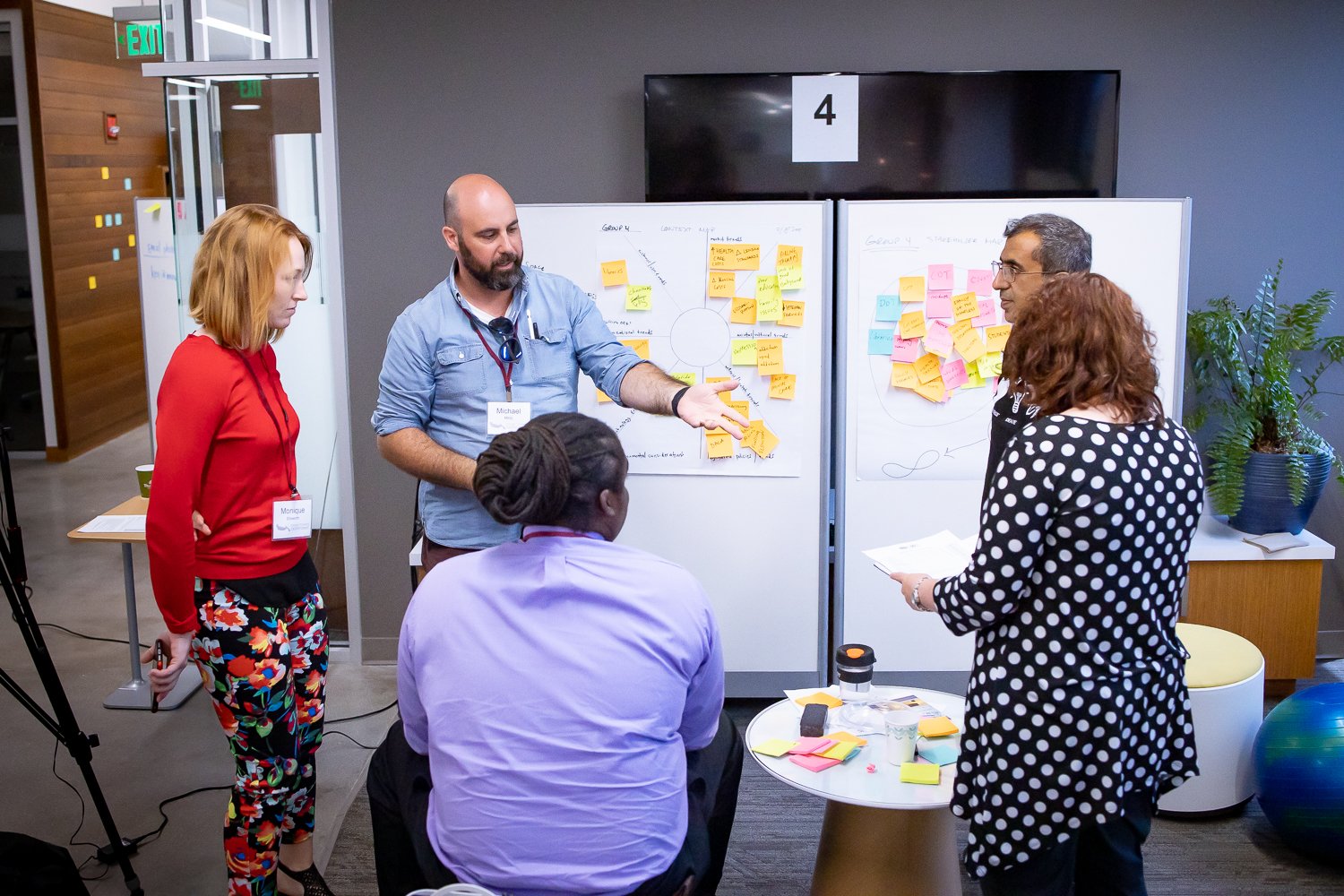
Scientific Innovation Strategies:
Design Sprint
Pitch
The pitch is your opportunity to convince people your idea is worth doing. You’ll want to present only the most essential parts of the problem and your solution. Keep it simple!
Timing
Check out these example pitches in a 2-minute, 15 second format.
Content
Tips
Keep your pitch to exactly 5 minutes in length.
(It’s a lot harder than it sounds!)
You’re telling a story. It can be helpful to start with empathy, just like you did in the design sprint! Be sure your ideas flow and you don’t miss any key points.
Cover slide: your logo and catchy, descriptive name. (tagline optional)
Introduce your team and your role(s) in the project.
Start with your key persona and the problem.
Focus in on the parts of the problem that your solution will address. Your want your audience to feel empathy for your key stakeholder just like you did!
Don’t forget to add certain business aspects of the problem, like how many people are affected (target market)
Then present your solution (prototype). Be sure the value proposition is crystal clear.
Walk the audience through how the solution (prototype) is used and how success is measured. If you haven’t tested it yet, include some predictions about how it will work, and describing the anticipated outcome.
Consider a “how it works” slide (if you have time and feel it’s helpful)
If there are special enabling technologies used, make sure this aspect is clear and easy to understand.
You may want to consider a competitor comparison slide, showing how your product is better. If you don’t have a full slide, you’ll want to be sure to at least mention why you’re better!
Being quantitative is essential, if you have any feasibility testing to reference.
Consider a “how it works” slide.
If there are special enabling technologies used, make sure this aspect is clear and easy to understand.
Who is buying this? What’s the anticipated price point?
More Examples
End with a success slide that closes out your story for the key stakeholder.
Be sure you have at least one slide that shows your total addressable market (Who are you starting with? Why are they your pilot? How much revenue do you expect to generate?)
10 or so slides is PLENTY for a 5 minute presentation.
Less is more. Don’t cram slides with text, and ensure that photos/illustrations really add to your point.
Keep your audience in mind. Explain any acronyms and don’t use jargon.
Slides
Make a script so you don’t miss talking points or waste time rambling.
If you have multiple presenters, designate who is saying what and ensure that speakers can transition smoothly.
Rehearse! rehearse! rehearse! (The more the better!)
Tips:
Pick the right tools
Divide and conquer
Shared workspaces
Put it together
Do a trial run (or 5!)
Seek feedback
As Jake Knapp illustrates in his book Sprint, it takes a lot of time, effort (and money!) to get a prototype real enough to test.
Your job during this sprint is to get to “real enough to test” to get feedback from key stakeholders and refine. You will then pitch your solution prototype to get time/resources to make your solution a reality.



